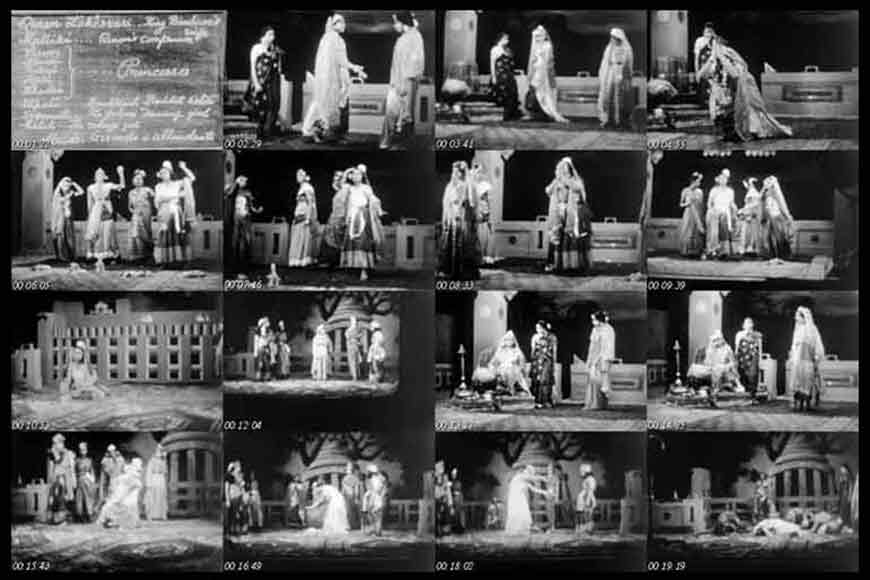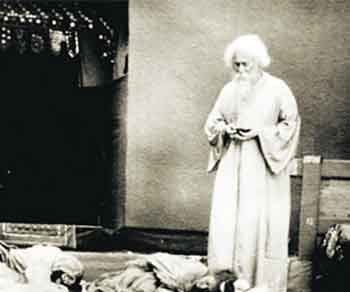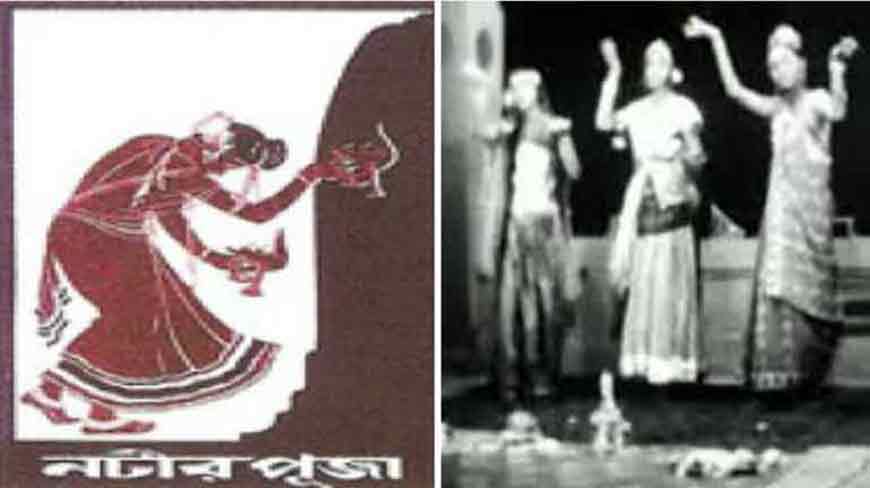When Rabindranath Tagore donned the hat of a film director!

1931 was a landmark year of Indian cinema. India's First Talkie movie, Alam Ara, was released in Bombay, that was such an instant hit, that police force had to be summoned to control the crowds. In 1934, Bombay Talkies, launched by Himansu Rai, spearheaded the growth of Indian cinema. Rabindranath Tagore, the poet, playwright, novelist, philosopher, musician and artist was aroused by the immense possibility this new medium offered. It offered new challenges and opened new vistas. The poet wrote in one of his letters, “The main thing in the film is the motion of the scene. The beauty or majesty of this moving face should be exposed as such, which can make you successful without the help of any sentence. In the current trend of music, as the music can gain its glory without any meaning, why cannot the current flow of form be exposed?”
Tagore played the leading role in a movie called Tapati. It was shot at Santiniketan and later transformed into a film by the British Dominion Films Limited in 1929. Although many of his stories were adapted for films during his lifetime, Natir Puja was the only film where Tagore turned a director. In the sub-continent’s history of films, this movie is considered to be a milestone, as it is a creative example of the direct and intimate involvement of Tagore with the rise of the film industry of 1930s.
 Natir Puja is a dramatised version of his long poem, Pujarini. This was an all-woman play he wrote on the request of his daughter-in-law, Pratima Devi, who wished to perform it on the poet’s 70th birthday. The story is based on a 2,500-year-old story of a nati (danseuse) who sacrifices herself for her devotion to Lord Buddha. Tagore based the play on a legend in the Pali sacred book, Avadhan Shatak. The story revolves around the followers of Dharmadebishi Devdatta, who, with the help of Emperor Ajatshatru, is out to destroy Buddhist temples and stupas and annihilate all worshippers of Buddha. The temple dancer, who is a devout worshipper of Lord Buddha, defies royal orders and visits the temple to offer her prayers. The royal army spots her and she is executed for her crime of defying the King.
Natir Puja is a dramatised version of his long poem, Pujarini. This was an all-woman play he wrote on the request of his daughter-in-law, Pratima Devi, who wished to perform it on the poet’s 70th birthday. The story is based on a 2,500-year-old story of a nati (danseuse) who sacrifices herself for her devotion to Lord Buddha. Tagore based the play on a legend in the Pali sacred book, Avadhan Shatak. The story revolves around the followers of Dharmadebishi Devdatta, who, with the help of Emperor Ajatshatru, is out to destroy Buddhist temples and stupas and annihilate all worshippers of Buddha. The temple dancer, who is a devout worshipper of Lord Buddha, defies royal orders and visits the temple to offer her prayers. The royal army spots her and she is executed for her crime of defying the King.
The dramatized version of Natir Puja was first staged at Jorsanko Thakurbari in 1927. This was a time when the poet was facing acute financial crisis while setting up his dream project, Visva Bharati University in Santiniketan. It was again staged at New Empire, Calcutta to celebrate the poet’s 70th birthday. Birendranath Sircar (B.N Sircar), film producer and the founder of New Theatres Calcutta was very impressed by the show. He offered Tagore to transform the play into cinema under his New Theatres banner. Tagore consented as it meant money would come for the Sriniketan Project.

The New Theatres Studio played host to Tagore in 1931. Tagore directed the film, shot on NT Studio’s Floor Number One. Students of Santiniketan enacted in the film. He also played a role in the film. Nitin Bose was the cinematographer while Subodh Mitra edited it. The film was shot within four days. The voice over of the narrative was done by Tagore himself. Nandalal Basu’s daughter, Gauri Basu, received accolades for her role as Srimati, the protagonist of the film. The film marked a number of firsts, including the unconventional shooting technique used. The conventional rule of cinema was rejected. Instead, Natir Puja was filmed like a stage play. After editing, the footage was 10,577 feet! The story was also very progressive for the times. The metamorphosis of a court dancer from a woman of entertainment to a woman of spiritual dedication was extremely radical when Tagore made Natir Puja.
The movie was released on September 22, 1932 at Chitra Cinema. Rabindranath himself was present at the theatre. On December 4, 1932, the film was again screened at Shri Rupa Cinema Hall. Despite positive reviews in newspapers, the film was not successful at the box office. Sadly, the prints of the film were reportedly destroyed in a fire at the New Theatres.









